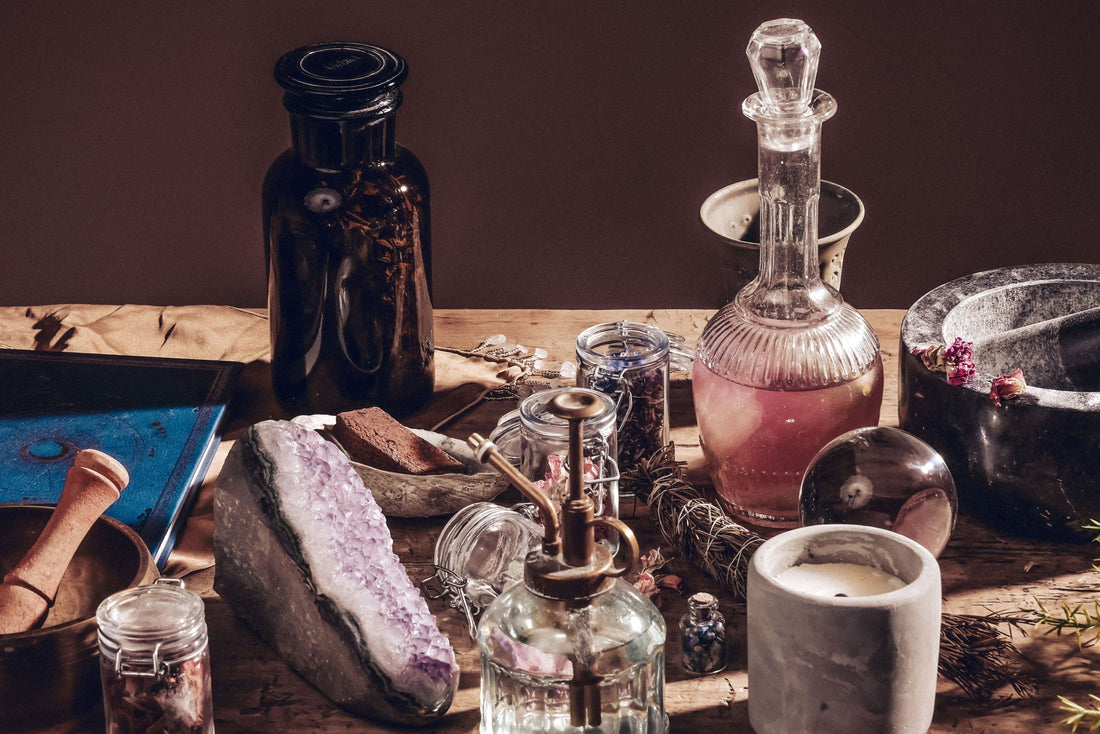
Top 10 Natural Pigments You Can Make at Home
Share
By Daniela Hunter
Looking for a way to create eco-friendly, affordable, and beautiful pigments at home?
You don’t need to be a chemist or even leave your kitchen.
In this guide, I’ll walk you through the top 10 natural pigments you can create using common pantry staples like coffee, teas, and spices. These DIY pigments are perfect for watercolor, ink, art journaling, or craft projects.
✅ Why Use Natural Pigments from Your Kitchen?
-
🌱 Non-toxic and safe
-
💸 Cost-effective and beginner-friendly
-
🧘🏽♀️ Aligned with mindful, sustainable living
-
🎨 Adds organic textures and earthy tones to your work
Whether you're homeschooling, teaching a class, or exploring your own creativity, these pigments are a zero-waste way to tap into nature’s palette.
🧪 How to Turn Kitchen Ingredients into Pigments
Before we dive into the top 10, here’s the basic method for extracting pigment:
General Pigment Extraction Method:
-
Simmer the ingredient in water (or alcohol)
-
Strain out solids
-
Reduce the liquid (boil to concentrate)
-
Use as paint or ink, or mix with binder (gum arabic for watercolor, cornstarch for pastels)
🎨 Top 10 Natural Pigments You Can Make at Home
1. ☕ Coffee – Warm Browns
-
Source: Brewed espresso, instant coffee, or used grounds
-
Tone: Light sepia to rich umber
-
Best For: Washes, backgrounds, vintage illustrations
-
Bonus: Add a pinch of baking soda to shift tone to cooler brown
2. 🍵 Black Tea – Golden Browns
-
Source: Steeped black tea bags or loose leaves
-
Tone: Amber, golden brown
-
Pro Tip: Double-steep for stronger pigment
-
Best For: Botanical painting, calligraphy ink
3. 🌿 Matcha or Green Tea – Soft Greens
-
Source: Matcha powder or green tea leaves
-
Tone: Pale olive to grassy green
-
Binder Needed: Mix matcha with honey + water or gum arabic
-
Best For: Abstracts, leaf motifs, layering
4. 🌶️ Paprika – Burnt Orange
-
Source: Paprika powder
-
Tone: Warm, rustic orange
-
Tips: Infuse in hot water or alcohol for brighter results
-
Best For: Textured paper, underpaintings, spice-inspired art
5. ✨ Turmeric – Bright Yellow
-
Source: Turmeric powder
-
Tone: Neon yellow (lightfastness is low—fades in sunlight)
-
Hack: Add baking soda to slightly neutralize the color for a softer hue
-
Best For: Art journaling, kids’ crafts, printmaking
6. 🫚 Ginger – Pale Beige
-
Source: Grated fresh or powdered ginger
-
Tone: Pale ivory to sandy tan
-
Bonus: Adds texture when dry
-
Best For: Soft, earthy palettes and minimalistic art
7. 🧅 Red Onion Skins – Mauve to Gray
-
Source: Boiled onion skins
-
Tone: Dusty mauve, smoky lavender, even soft gray depending on pH
-
Hack: Add vinegar to deepen the purple
-
Best For: Ethereal pieces, ink washes
8. 🌸 Hibiscus Tea – Berry Pinks
-
Source: Dried hibiscus petals or hibiscus tea bags
-
Tone: Fuchsia, deep pink
-
Warning: This pigment is pH sensitive—add lemon juice to intensify, baking soda to mute
-
Best For: Florals, abstracts, watercolor blends
9. 🫖 Chai Tea – Warm Tan
-
Source: Brewed chai concentrate (cloves, cinnamon, cardamom)
-
Tone: Spiced brown with reddish undertones
-
Bonus: Smells amazing while you paint
-
Best For: Autumn scenes, cozy compositions, mixed media
10. 🧄 Clove or Cinnamon – Deep Reddish Brown
-
Source: Ground clove or cinnamon sticks
-
Tone: Dark sienna with spicy hues
-
Tip: Mix with a touch of water and alcohol to extract more color
-
Best For: Vintage art, tea-stained effects, herbal-themed work
🧠 FAQs: Kitchen Pigment Questions Answered
❓ Can I mix these pigments with traditional paint?
Yes, but stick with water-based media. Many work beautifully as underlayers or washes.
❓ Will they fade over time?
Some (like turmeric or hibiscus) may fade in sunlight. To preserve:
-
Use fixatives
-
Keep artwork out of direct light
-
Scan your work for archival prints
❓ Are these pigments safe for kids?
Most are non-toxic and food-grade. Always supervise and test for allergies.
🔗 Extra Tips to Maximize Your SEO Reach
If you're blogging about this topic, here’s how to rank #1 on Google:
-
Use semantic keywords like:
-
“homemade watercolor from spices”
-
“DIY natural pigment recipes”
-
“eco-friendly art supplies from kitchen”
-
-
Include a Pinterest-optimized graphic
-
Add YouTube video embeds for tutorials
-
Use schema for "How-To" and FAQ sections
💡 Bonus: Natural Pigment Binder Recipe (Free Download)
Want smoother blends and longer-lasting colors?
👉 Download my free Kitchen Pigment Binder Formula PDF that includes:
-
Gum arabic alternatives
-
Natural preservatives
-
Ratios for watercolor and ink
🎯 Final Thoughts
Creating your own pigments from spices, coffee, and teas isn’t just sustainable—it’s sacred. Each color tells a story. Each tone carries energy. This is slow art for conscious creators.
Ready to paint your world with what’s already in your cupboard?
